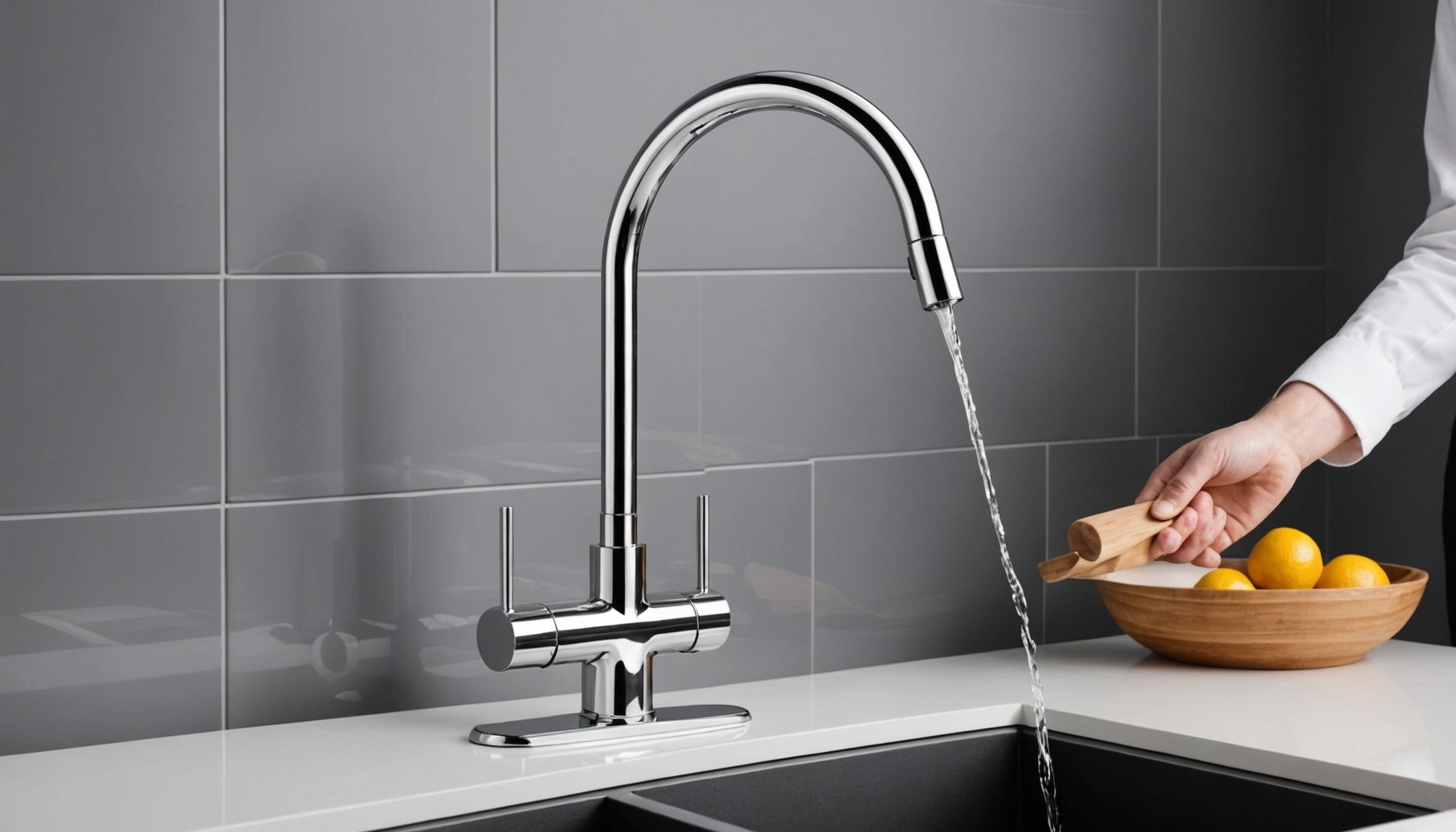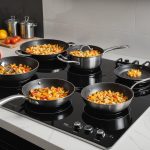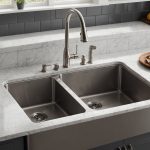Selecting the right kitchen faucet can significantly impact water conservation efforts in your home. Beyond aesthetics, modern designs offer features that minimize water waste while enhancing functionality. This guide explores essential factors to consider when choosing a UK kitchen faucet, including eco-friendly options and innovative technologies. Make an informed decision that benefits both your kitchen and the environment. Let’s dive into the details and help you find the perfect fixture for your needs.
Understanding Water Waste and Its Impact
Understanding the environmental impact of water waste is crucial for sustainable living. In the UK, excessive water usage not only strains the environment but also depletes valuable resources. This is a growing concern as climate change intensifies.
This might interest you : Discover the Advantages of Double-Walled Espresso Cups for the Ultimate Coffee Experience
Households are major contributors to water waste. On average, a UK household uses around 350 liters of water per day. This excessive consumption leads to significant environmental challenges, including droughts and ecosystem damage.
Key Statistics on Household Water Consumption
- Average Daily Use: 350 liters per household
- Annual Waste: Over 3 billion liters nationally
- Potential Savings: 30% reduction with efficient practices
The environmental impact of such waste is profound. It exacerbates water scarcity and contributes to the degradation of natural habitats. Reducing water usage is not just about conserving resources; it's about protecting the planet for future generations.
In parallel : Discover the Advantages of Double-Walled Espresso Cups for the Ultimate Coffee Experience
By adopting water-saving measures, households can significantly reduce their water waste. Installing efficient fixtures, fixing leaks, and mindful consumption are practical steps. These actions not only lower utility bills but also mitigate the environmental impact of water waste, fostering a sustainable future.
Types of Kitchen Faucets
Exploring diverse options for modern kitchens.
Overview of Various Kitchen Faucet Types
Kitchen faucets come in a variety of designs and categories, each offering unique benefits. Single-handle faucets are popular for their simplicity and ease of use, allowing users to adjust water temperature with one hand. In contrast, double-handle faucets provide precise control over hot and cold water, appealing to those who prefer traditional styles.
Comparison: Single-Handle vs. Double-Handle Faucets
When choosing between single-handle and double-handle faucet types, consider functionality and aesthetics. Single-handle designs are compact, making them ideal for smaller kitchens. They are also easier to install and maintain. On the other hand, double-handle faucets offer a classic look and can be more durable due to their robust construction.
Advantages: Pull-Down vs. Pull-Out Faucets
Pull-down faucets feature a high-arc spout, perfect for filling large pots and cleaning. They are often favored for their elegant design. Pull-out faucets, with their flexible hose, are excellent for multitasking, such as rinsing vegetables and cleaning the sink. Both faucet designs enhance kitchen functionality, but the choice depends on individual needs and kitchen layout.
- Single-handle: Simple, space-saving
- Double-handle: Classic, precise control
- Pull-down: High-arc, stylish
- Pull-out: Flexible, versatile
Water-Saving Technologies in Faucets
Exploring innovative solutions for eco-friendly water consumption.
Understanding Low-Flow Faucet Technology
Low-flow faucet technology is designed to reduce water consumption without sacrificing performance. These faucets limit the flow rate, typically to 1.5 gallons per minute or less, compared to standard faucets that use about 2.2 gallons per minute. This significant reduction in water usage makes them an ideal choice for those seeking eco-friendly features in their homes.
Benefits of Aerators and Flow Restrictors
Aerators and flow restrictors are key components in enhancing water efficiency. An aerator mixes air with water, maintaining pressure while reducing flow, which results in a softer, splash-free stream. Flow restrictors further limit the volume of water, ensuring that the faucet remains efficient. Together, these features contribute to substantial water savings.
Innovative Features Enhancing Water Efficiency
Modern faucets incorporate several innovative features to boost water efficiency. Some models include touchless activation, reducing water waste by turning off automatically when not in use. Others feature adjustable spray patterns that cater to different tasks while minimizing water consumption.
- Low-flow faucet: Reduces water usage
- Aerators: Mix air with water
- Flow restrictors: Limit water volume
These water-saving technologies not only conserve resources but also help reduce utility bills, making them a practical addition to any household.
Tips for Choosing an Eco-Friendly Kitchen Faucet
Guidance for selecting sustainable and efficient faucets.
Key Features for Eco-Friendliness
Selecting an eco-friendly faucet involves evaluating several critical features. Begin by examining the faucet's flow rate; opt for models with a low-flow design to minimize water usage. Consider faucets equipped with aerators, which mix air with water to maintain pressure while reducing flow. These features are essential for environmentally conscious buyers.
Importance of Certifications and Standards
Certifications like WaterSense are crucial in ensuring the faucet meets specific eco-friendly standards. A WaterSense-labeled faucet guarantees water efficiency without compromising performance. Look for this certification to ensure your purchase aligns with sustainable practices.
Practical Tips for Evaluating Faucet Performance
When evaluating an eco-friendly faucet, test for smooth operation and ease of use. Ensure the faucet's finish is durable and resistant to corrosion. Additionally, consider the installation process; some faucets offer easy installation features, reducing the need for professional help.
- Flow rate: Low-flow design
- Aerators: Enhance efficiency
- WaterSense: Certification for eco-friendliness
Choosing the right eco-friendly faucet not only conserves resources but also contributes to a sustainable lifestyle, offering both environmental and economic benefits.
Installation and Maintenance Advice
Practical insights for efficient faucet management.
Step-by-Step Guide to Installing a Kitchen Faucet
Installing a kitchen faucet can be a straightforward DIY project. Start by turning off the water supply and removing the old faucet. Next, clean the sink area and place the new faucet's gasket on the base. Insert the faucet through the sink holes, ensuring it's securely seated. Underneath, attach the mounting nuts and tighten them. Connect the water supply lines to the faucet, ensuring no leaks. Finally, turn the water back on and test for proper operation.
Tips for Maintaining Faucet Efficiency Over Time
To maintain your faucet's efficiency, regularly check for leaks and clean the aerator to prevent mineral buildup. This ensures a consistent flow rate and prolongs the faucet's lifespan. Additionally, use a mild cleaner to keep the faucet surface free from stains and corrosion.
Common Issues and Troubleshooting Techniques
Common issues include dripping faucets and low water pressure. For drips, replace worn-out washers or seals. If water pressure is low, clean or replace the aerator. Regular inspection and maintenance can prevent these issues, ensuring your kitchen faucet remains efficient and functional.
- Turn off water supply before installation
- Regularly clean aerator to maintain flow
- Check for leaks to ensure efficiency
Recommended Eco-Friendly Kitchen Faucets
Exploring the best eco-friendly faucets for your kitchen needs.
Overview of Top-Rated Eco-Friendly Kitchen Faucets
Selecting the best eco-friendly faucets involves considering various features and user reviews. Eco-friendly faucets are designed to conserve water while maintaining performance. Among the top-rated models, the Delta Trinsic stands out for its sleek design and WaterSense certification. Another popular choice is the Moen Arbor, known for its low-flow technology and touchless operation.
Comparison of Features and Benefits of Selected Models
The following table highlights the features of these eco-friendly faucets:
| Model | Flow Rate | Certification | Special Features |
|---|---|---|---|
| Delta Trinsic | 1.5 GPM | WaterSense | Touch-Clean Spray |
| Moen Arbor | 1.5 GPM | WaterSense | MotionSense Touchless |
Both models offer a low-flow design, ensuring significant water savings. The Delta Trinsic is praised for its easy maintenance, while the Moen Arbor provides convenience with its motion-activated sensor.
User Reviews and Feedback on Recommended Products
User feedback highlights the reliability and efficiency of these eco-friendly faucets. Many appreciate the Delta Trinsic for its modern look and easy installation. The Moen Arbor receives accolades for its innovative features, particularly the touchless operation, which users find both practical and hygienic.













